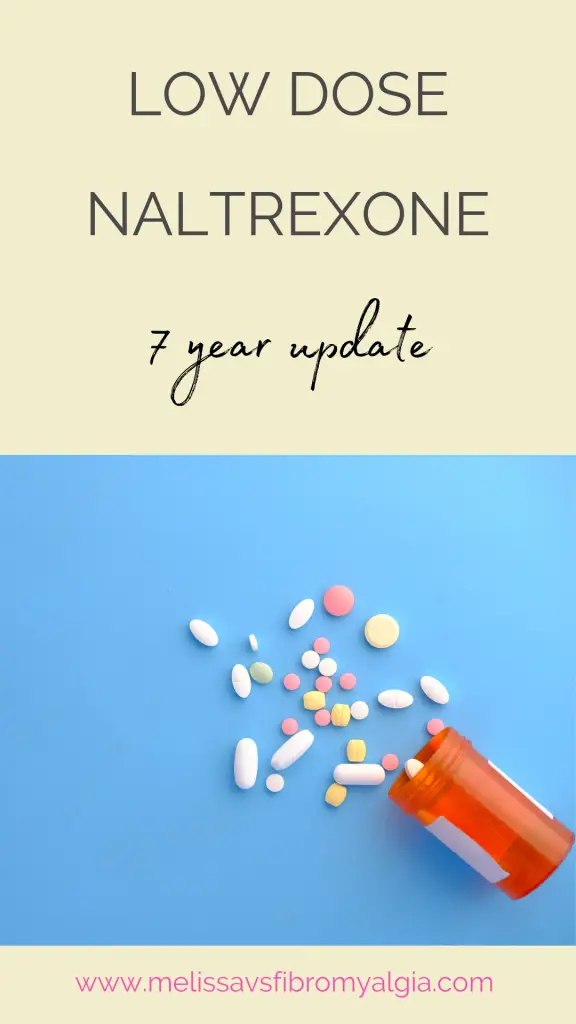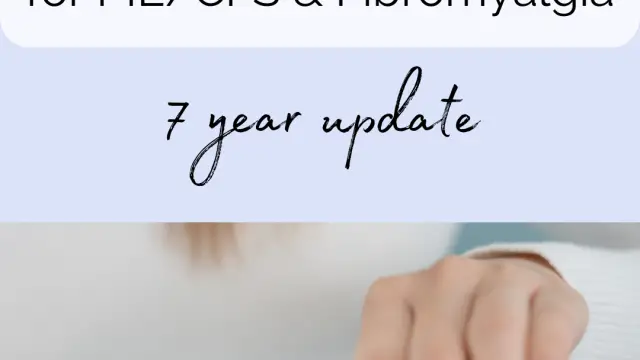Last Updated on March 17, 2024 by melissanreynolds
Low dose Naltrexone (LDN) is the medicine that changed my life.
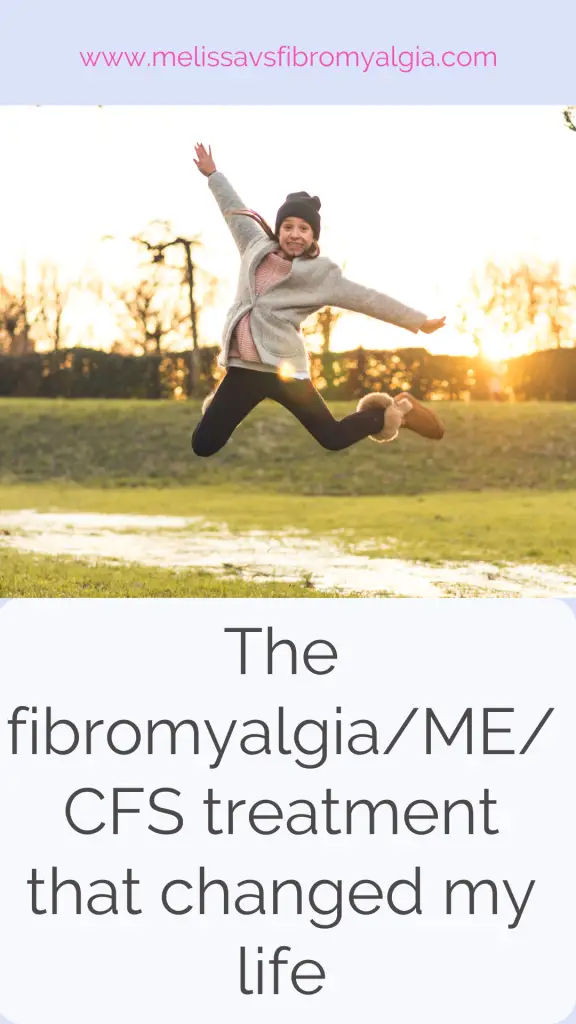
I am so pleased to be able to share my seven year update with you.
We are going to dig into what LDN is, how it’s helped me, research and some recommendations for your journey.
What LDN Is
Naltrexone is an opioid antagonist that works differently in the body when taken at a lower dose. Usually prescribed for alcohol and opioid addictions at doses of 50mg or more, low dose Naltrexone is usually anything from .25mg – 6mg.
“The research studies tend to focus on pain, but sleep and fatigue can be improved also. More recent studies are finding it’s help with cognition or brain fog. Low-dose naltrexone therapy is sometimes used to relieve pain and fatigue associated with fibromyalgia and chronic fatigue syndrome. Researchers are also looking at its effectiveness in treating multiple sclerosis, Crohn’s disease, and long COVID.” Low-Dose Naltrexone Benefits from Very Well Health
Researchers don’t yet know WHY LDN helps, but have a few working theories including via certain proteins in the nervous system inflammation, immune system, or boosting the body’s own pain killing mechanisms. The above article says more on this.
On side effects of LDN
Here’s the thing I wish everyone knew – the side effects of LDN (appear to me) to be far less than any other med we are offered.
Side effects are generally transient (short-lived) and limited. For example insomnia, headache or vivid dreams.
Also, LDN causes no withdrawals, other than your body suffering because it was making a difference. You don’t need to reduce your dose. When I went off just prior to having my third and fourth babies, and for my surgery, there were absolutely no withdrawals or negative effects.
The video update
How long does it take to see benefits with LDN?
It can take some time to see benefit, though most of the trials start patients at 4.5mg immediately and last around eight weeks. In practice, myself and for people in the LDN groups I am in, we tend to need to start our doses lower and titrate up (increase our dose) slowly. It’s also best to give it at least three months trial.
In my four year update, I broke down my benefits as such
- Sleep (improved)
- Pain (improved)
- Fatigue (improved)
- Emotional (can’t get over it)
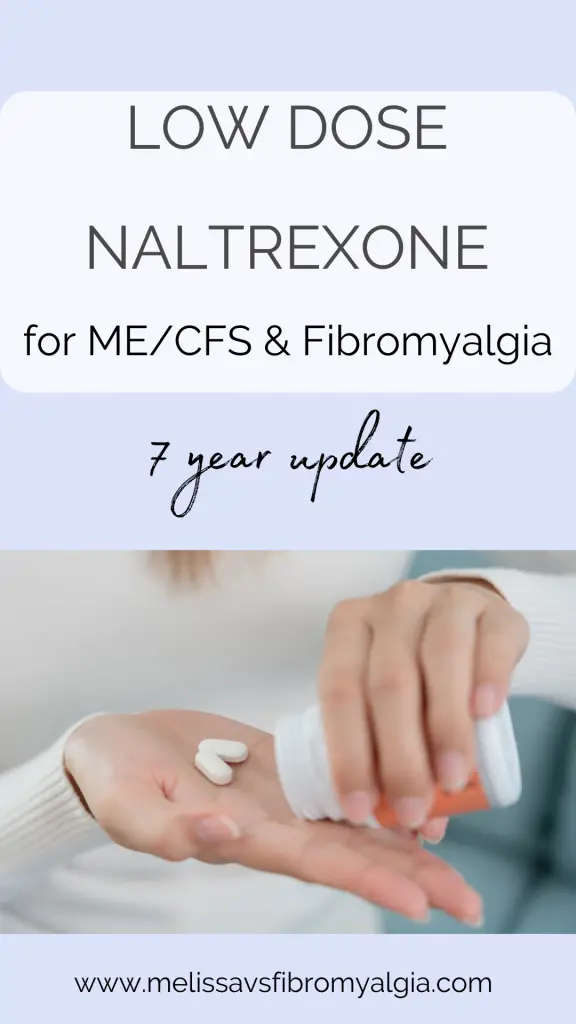
Some personal context
Things have changed a lot in the past three years. We found out that not everything I experience is fibromyalgia (!) I have chronic fatigue syndrome, interstitial cystitis and orthostatic intolerance/POTS. We also found that my severe periods were endometriosis. In 2023 I had hysterectomy and endometriosis excision surgery.
Since the surgery the period pain has obviously gone (halleluiah) and much of the abdominal pain is gone. Which is amazing.
I am left with interstitial cystitis, painful bladder syndrome. Which I can manage by avoiding msg and artificial sweeteners. I haven’t had a flare up in months, cross your fingers and toes.
But since the surgery my OI/POTS has been worse, and so has my heat intolerance. So this summer my fatigue is higher again.
I share this to highlight that no one thing is a magical fix on it’s own and it’s not all sunshine and rainbows since i started LDN.
How is LDN going for me now?
It’s still changing my life.
As I indicated above, it’s helped:
- Sleep
- Pain
- Morning stiffness
- Fatigue and tolerance
- Emotionally (the improvements have given me such profound comfort)
Since starting LDN (and the other key things I do to be as well as possible) I no longer spend hours awake, alone in the middle of the night desperate to be asleep, but in too much pain for it to happen. Those long nights were one of the harder parts to bare. And they occurred for many years.
I would not be without it. When I go off it, within a week or two, I’m reminded of just how bad it was before. Not sleeping, morning stiffness, increased pain, lethargy and fatigue. In a word, miserable.
I believe it is the foundation of my improvement. Low dose Naltrexone, Yoga Nidra guided meditation, pacing, quetiapine and normal health living habits are the keys to keeping me as functional and live with as low symptoms as possible.
That’s why it’s disappointing the researching isn’t providing clarity…
Research on LDN
There has been a lot of research in the last few years, since Dr Jarred Younger in 2013 found very positive results in a small study. Unfortunately the results are mixed.
The most recent piece of research I came across found that overall it wasn’t clinically significant. However, for the few it helped, it helped A LOT. Like 50% pain reduction. The authors of the study advised not to discontinue patients already on LDN whom it helps. But that new patients shouldn’t be started on it.
I disagree. As a patient advocate and a person who’s benefited from it enormously. Given the low side effect profile, ease of trying it and accessibility, others should get to try.
Fibromyalgia and chronic fatigue syndrome (and POTS and long covid) are similar syndromes. But all patients are very different. What helps one doesn’t necessarily help another. So why should some patients be denied a potential 50% decrease in symptoms because it doesn’t help others? Especially if we can mitigate the side effects with reduced dosing, slowly increasing and moving to morning dosing if insomnia is an issue?
If you are interested in trying it, do your research and present your case to your doctor.
Who can prescribe LDN?
One question I see a lot is who can prescribe it? The answer is general practitioners. Regular doctors can usually prescribe it, they just need to be willing to look into it. “off label” prescriptions for these conditions are no unusual.
I have several blog posts, and a few videos too. I also have an eBook with information, research and a data sheet all in one handy PDF for a few dollars if that helps. I’ve been diligently updating this as I go, and of course, one can fit much more detail into an eBook than in a blog post.
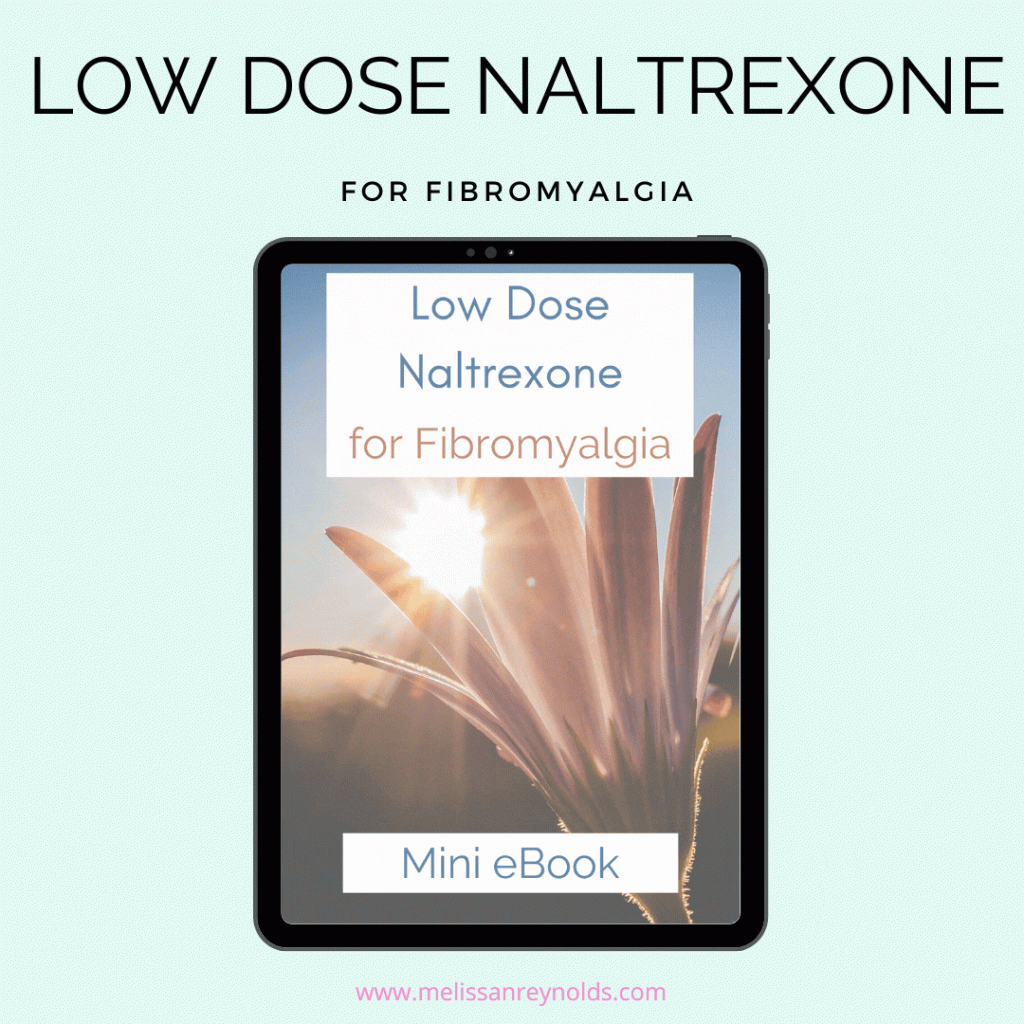
A note on dosing
Dosing tends to trip people up. If your doctor isn’t experienced with prescribing LDN, then they may not be able to guide you. The general practice is to start low and go slow. For example start at 0.5mg or 1mg and then increase slowly over several weeks.
I explore the concept of dosing, including guidance and my experience here.
Conclusion on LDN after 7 years
I believe it’s worth looking into. Especially with the lack of other helpful treatments. You should have the opportunity to try a medicine that, at best, could help you more than 50%, and at worst might cause some transient symptoms.
I would not be where I am today without it. It’s my hope that anyone it could help, finds out about it.
Please share your experience with LDN
